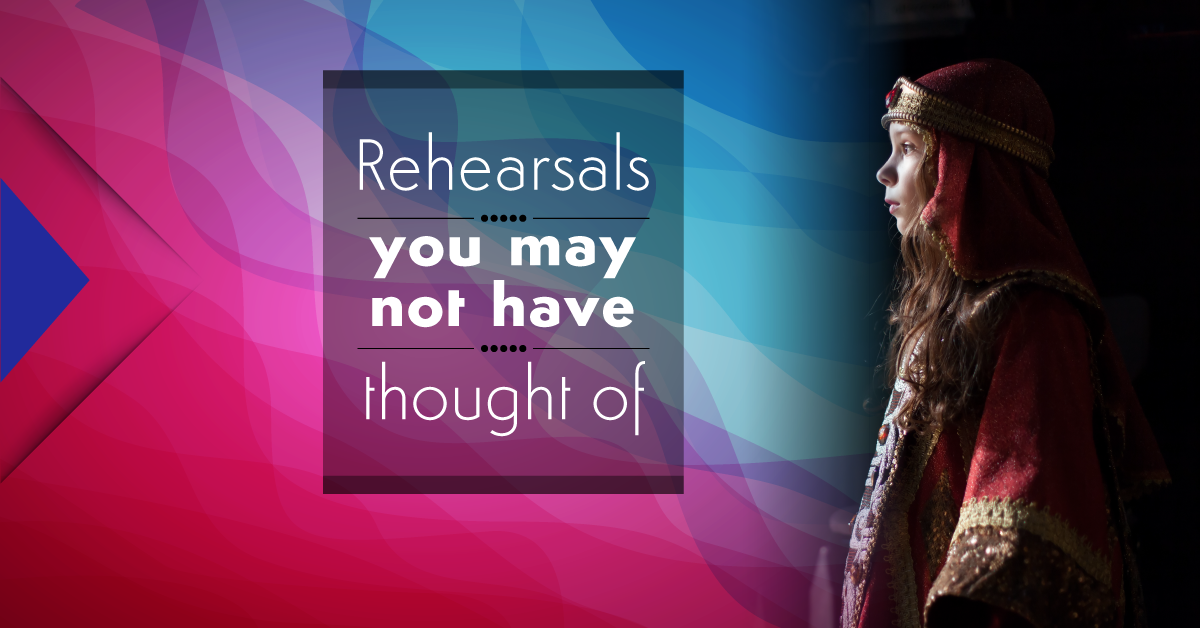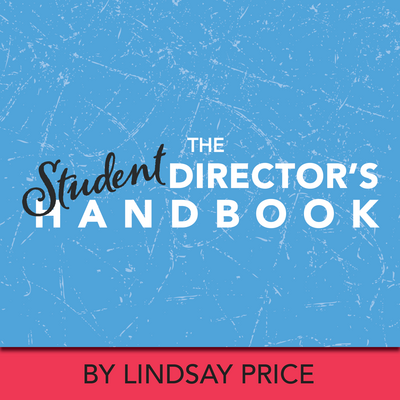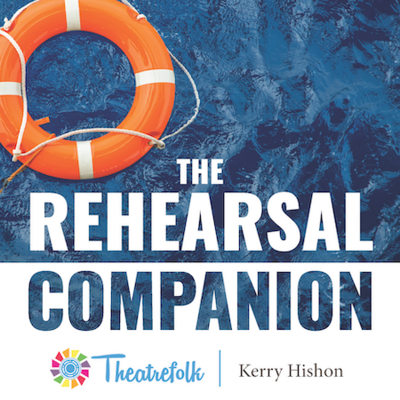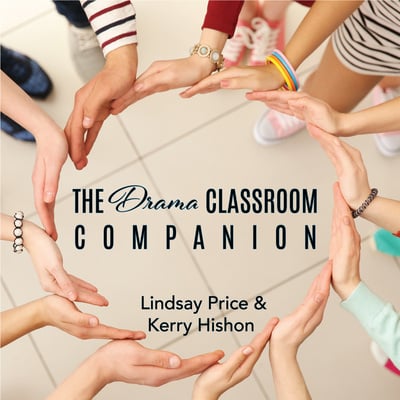Horror Movie 101: Failing Can Be Deadly by Steven Stack is a chilling mix of horror and humor - perfect for student performers and the spooky season! 👻
Rehearsals You Need to Include in Your Schedule (That You May Not Have Thought Of)
Creating a rehearsal schedule is one of the most challenging parts of producing a show, but it makes theatrical life so much easier. Teachers and directors: When making your rehearsal schedule, I’m sure you’ve already included dates for blocking, tech rehearsal, and dress rehearsal. But here are four additional rehearsals you may wish to consider including in your plans, to help you in your planning process.
Transitions Rehearsals
A transitions rehearsal is where you meticulously map out exactly what changes need to happen from scene to scene (furniture on/off, scenery or flats on/off, quick changes,etc.), and who is going to do them. Is it tedious? Yes. Useful? Definitely.
You may want to schedule two rehearsals for transitions, depending on the complexity of your show. At one rehearsal, sit down with your cast and crew and go through the script page by page and note what people wear in each scene, what props are brought on/off, what furniture and set pieces need to go on/off, and who is bringing each item on. Make sure everyone writes this down in their script! You can also include notes about pre-set items and places for costume quick changes.
After that, you will want to do a physical transition rehearsal where students actually run each transition in the space, on their feet. This can be combined with a cue-to-cue rehearsal, but it’s better to know ahead of time what needs to be done. This helps students remember what to do in each scene and helps actors and crew members to take responsibility!
Sitzprobe
If you are directing a musical and you have a live band or orchestra, you’ll definitely want to have a sitzprobe. Sitzprobe is a German word meaning “seated rehearsal.” This is where the band/orchestra and cast sing/play through the musical together for the first time, without any staging or production elements—just a room full of people performing together.
A sitzprobe is beneficial for the actors, so they’ll know how the music truly sounds and how their vocals blend with the music (or how their vocals get drowned out by the band). It’s also beneficial for the musicians, so they know the tempos and volume level they need to play at.
Sensitive, Private Rehearsals
You will want to allot time for closed rehearsals (where only a few actors/essential crew are called) to work on scenes of a potentially sensitive nature, such as:
- Romantic scenes, or scenes with kissing
- Emotionally charged scenes (sadness, anger, violence, etc.)
- Scenes that could involve anything potentially embarrassing to the actors
This is important for the comfort of the students involved in these scenes. Teachers: You must create a rehearsal environment where students feel safe to experiment and try different ways of portraying a scene. Let your students know that you are available for closed rehearsals should they wish to have them for a particular scene. Try to get these rehearsals done early in the rehearsal process. That way, you will have the maximum amount of time possible to review and refine these scenes and take the embarrassment/ sensitive nature out of the picture.
Costume Fittings/Costume Runs
You’ll want to allot time in the rehearsal schedule for actors to be fitted for costumes, to have a costume parade (so the teacher/director can approve the costumes selected), and to rehearse while wearing costumes (so students will know if they have any problems like an impossibly fast quick change, an extensive hair or makeup change, or restricted movement due to the costume).
Of course, different issues will usually arise that you didn’t even think of. But it’s better to be as proactive as possible and get as many potential issues out of the way before tech and dress rehearsals. Save your sanity, get your rehearsal schedule planned out in advance, and use each minute of time as effectively as you can.
Related Articles
The Student Director's Handbook
by Lindsay Price
Help students take their show from first audition to opening night with The Student Director’s Handbook. This easy-to-use ebook is full of guidelines, tips and templates designed to help students create a vision, circumvent problems and organize rehearsals on their way to a successful production.
The Rehearsal Companion
by Kerry Hishon
You’ve chosen the play, paid the royalties, done the script analysis, held your auditions, and cast the show. Tomorrow is the first rehearsal. Are you ready? Really ready? The Rehearsal Companion can help!
The Drama Classroom Companion
by Lindsay Price & Kerry Hishon
The Drama Classroom Companion is filled with articles and exercises to build the skills needed for theatrical performance as well as real world skills like creative thinking, critical thinking, collaboration, and communication.






